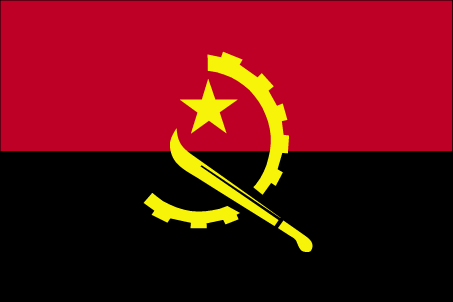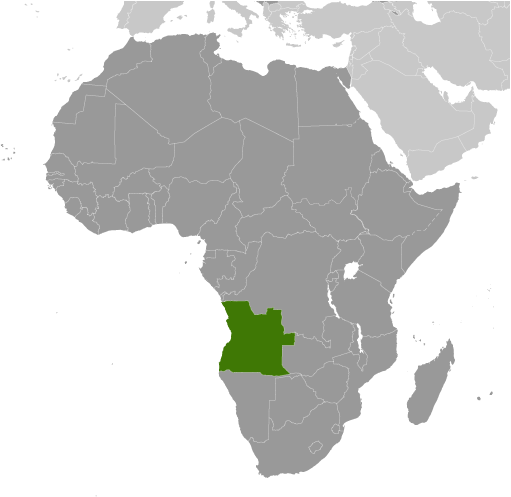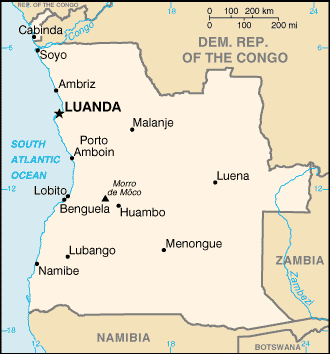|
Economy - overview:
|

|
|
Angola's high growth rate in recent years was driven by high international prices for its oil. Angola became a member of OPEC in late 2006 and its current assigned a production quota of 1.65 million barrels a day (bbl/day). Oil production and its supporting activities contribute about 85% of GDP. Diamond exports contribute an additional 5%. Subsistence agriculture provides the main livelihood for most of the people, but half of the country's food is still imported. Increased oil production supported growth averaging more than 17% per year from 2004 to 2008. A postwar reconstruction boom and resettlement of displaced persons has led to high rates of growth in construction and agriculture as well. Much of the country's infrastructure is still damaged or undeveloped from the 27-year-long civil war. Land mines left from the war still mar the countryside, even though peace was established after the death of rebel leader Jonas SAVIMBI in February 2002. Since 2005, the government has used billions of dollars in credit lines from China, Brazil, Portugal, Germany, Spain, and the EU to rebuild Angola's public infrastructure. The global recession that started in 2008 temporarily stalled economic growth. Lower prices for oil and diamonds during the global recession slowed GDP growth to 2.4% in 2009, and many construction projects stopped because Luanda accrued $9 billion in arrears to foreign construction companies when government revenue fell in 2008 and 2009. Angola abandoned its currency peg in 2009, and in November 2009 signed onto an IMF Stand-By Arrangement loan of $1.4 billion to rebuild international reserves. Consumer inflation declined from 325% in 2000 to about 10% in 2012. Higher oil prices have helped Angola turn a budget deficit of 8.6% of GDP in 2009 into an surplus of 12% of GDP in 2012. Corruption, especially in the extractive sectors, also is a major challenge.
|
|
|
GDP (purchasing power parity):
|

|
|
$126.2 billion (2012 est.)
country comparison to the world: 66
$118.1 billion (2011 est.)
$113.7 billion (2010 est.)
note:
data are in 2012 US dollars
|
|
|
GDP (official exchange rate):
|

|
|
$114.8 billion (2012 est.)
|
|
|
GDP - real growth rate:
|

|
|
6.8% (2012 est.)
country comparison to the world: 31
3.9% (2011 est.)
3.4% (2010 est.)
|
|
|
GDP - per capita (PPP):
|

|
|
$6,200 (2012 est.)
country comparison to the world: 142
$6,000 (2011 est.)
$6,000 (2010 est.)
note:
data are in 2012 US dollars
|
|
|
GDP - composition by sector:
|

|
|
agriculture: 10.2%
industry:
61.4%
services:
28.4% (2011 est.)
|
|
|
Labor force:
|

|
|
8.468 million (2012 est.)
country comparison to the world: 56
|
|
|
Labor force - by occupation:
|

|
|
agriculture: 85%
industry and services:
15% (2003 est.)
|
|
|
Unemployment rate:
|

|
|
NA
|
|
|
Population below poverty line:
|

|
|
40.5% (2006 est.)
|
|
|
Household income or consumption by percentage share:
|

|
|
lowest 10%: 0.6%
highest 10%:
44.7% (2000)
|
|
|
Investment (gross fixed):
|

|
|
13.3% of GDP (2012 est.)
country comparison to the world: 142
|
|
|
Budget:
|

|
|
revenues: $56.07 billion
expenditures:
$42.26 billion (2012 est.)
|
|
|
Taxes and other revenues:
|

|
|
48.8% of GDP (2012 est.)
country comparison to the world: 18
|
|
|
Budget surplus (+) or deficit (-):
|

|
|
12% of GDP (2012 est.)
country comparison to the world: 6
|
|
|
Public debt:
|

|
|
17.1% of GDP (2012 est.)
country comparison to the world: 135
18.1% of GDP (2011 est.)
|
|
|
Inflation rate (consumer prices):
|

|
|
10.3% (2012 est.)
country comparison to the world: 200
13.5% (2011 est.)
|
|
|
Central bank discount rate:
|

|
|
25% (31 December 2010 est.)
country comparison to the world: 2
30% (31 December 2009 est.)
|
|
|
Commercial bank prime lending rate:
|

|
|
16% (31 December 2012 est.)
country comparison to the world: 21
18.76% (31 December 2011 est.)
|
|
|
Stock of narrow money:
|

|
|
$12.93 billion (31 December 2012 est.)
country comparison to the world: 72
$11.58 billion (31 December 2011 est.)
|
|
|
Stock of broad money:
|

|
|
$44.65 billion (31 December 2012 est.)
country comparison to the world: 69
$36.55 billion (31 December 2011 est.)
|
|
|
Stock of domestic credit:
|

|
|
$27.12 billion (31 December 2012 est.)
country comparison to the world: 73
$22.18 billion (31 December 2011 est.)
|
|
|
Agriculture - products:
|

|
|
bananas, sugarcane, coffee, sisal, corn, cotton, cassava (manioc), tobacco, vegetables, plantains; livestock; forest products; fish
|
|
|
Industries:
|

|
|
petroleum; diamonds, iron ore, phosphates, feldspar, bauxite, uranium, and gold; cement; basic metal products; fish processing; food processing, brewing, tobacco products, sugar; textiles; ship repair
|
|
|
Industrial production growth rate:
|

|
|
5% (2010 est.)
country comparison to the world: 59
|
|
|
Current account balance:
|

|
|
$17.09 billion (2012 est.)
country comparison to the world: 21
$15.92 billion (2011 est.)
|
|
|
Exports:
|

|
|
$71.95 billion (2012 est.)
country comparison to the world: 50
$65.8 billion (2011 est.)
|
|
|
Exports - commodities:
|

|
|
crude oil, diamonds, refined petroleum products, coffee, sisal, fish and fish products, timber, cotton
|
|
|
Exports - partners:
|

|
|
China 36.3%, US 18.5%, India 10.6%, Taiwan 8%, Canada 6.9% (2012 est.)
|
|
|
Imports:
|

|
|
$22.32 billion (2012 est.)
country comparison to the world: 74
$19.75 billion (2011 est.)
|
|
|
Imports - commodities:
|

|
|
machinery and electrical equipment, vehicles and spare parts; medicines, food, textiles, military goods
|
|
|
Imports - partners:
|

|
|
China 36.3%, Portugal 16.5%, South Korea 11.3%, Netherlands 9%, China 8.8%, US 8.1%, South Africa 4.9%, Brazil 4.5%, France 4.2% (2012 est.)
|
|
|
Reserves of foreign exchange and gold:
|

|
|
$34.63 billion (31 December 2012 est.)
country comparison to the world: 48
$27.01 billion (31 December 2011 est.)
|
|
|
Debt - external:
|

|
|
$19.65 billion (31 December 2012 est.)
country comparison to the world: 79
$18.78 billion (31 December 2011 est.)
|
|
|
Stock of direct foreign investment - at home:
|

|
|
$115.5 billion (31 December 2012 est.)
country comparison to the world: 36
$101.9 billion (31 December 2011 est.)
|
|
|
Stock of direct foreign investment - abroad:
|

|
|
$8.196 billion (31 December 2012 est.)
country comparison to the world: 54
$6.346 billion (31 December 2011 est.)
|
|
|
Exchange rates:
|

|
|
kwanza (AOA) per US dollar -
95.54 (2012 est.)
93.741 (2011 est.)
91.906 (2010 est.)
79.33 (2009)
75.023 (2008)
|
|
|
Fiscal year:
|

|
|
calendar year
|
|
|
|





 )
)



